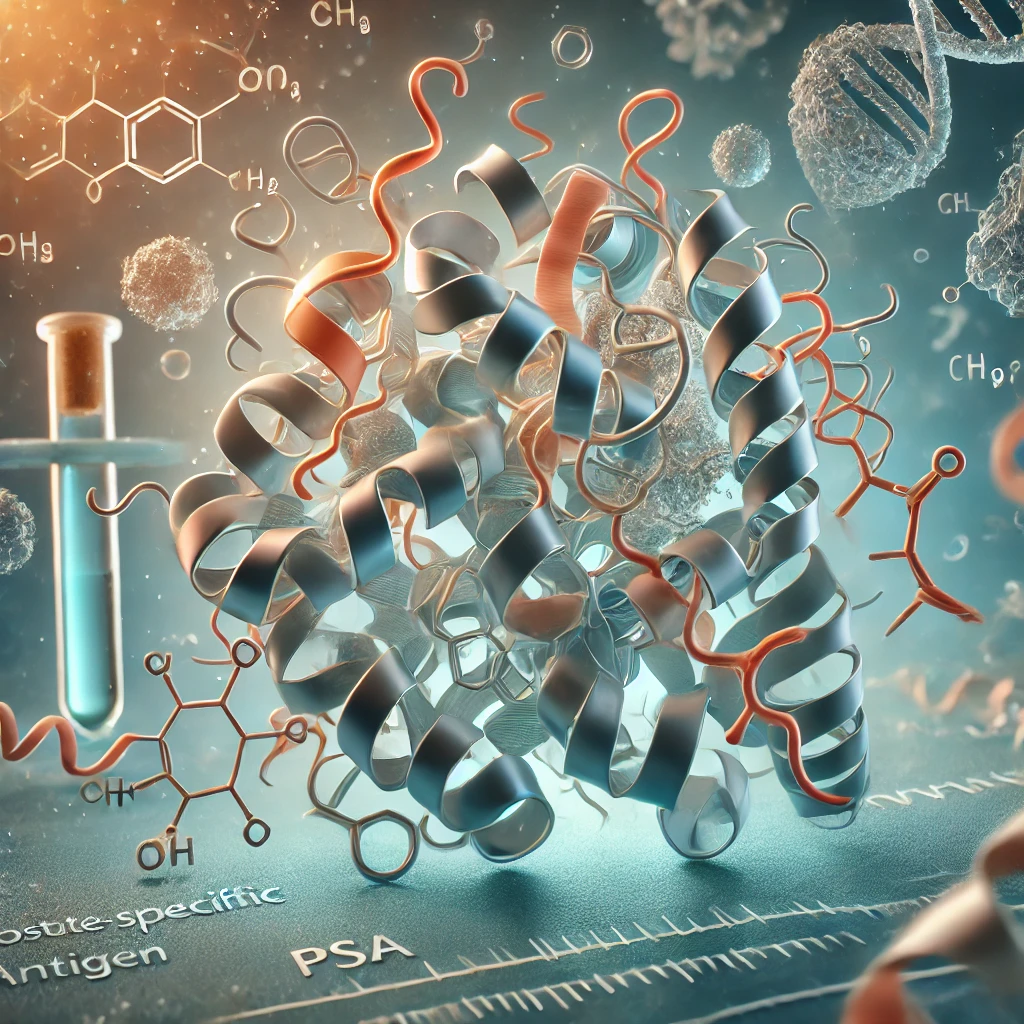PSA (Prostate-Specific Antigen)
Prostate-Specific Antigen (PSA) is a widely used cancer biomarker, particularly for prostate cancer (PCa). While it has transformed prostate cancer screening and monitoring, it also has notable limitations. Here’s a detailed breakdown based on current research:
🔍 What is PSA?
PSA is a serine protease produced mainly by the prostate gland. It is highly organ-specific but not cancer-specific, meaning elevated levels can also occur in benign conditions like benign prostatic hyperplasia (BPH) or prostatitis (Neeli et al., 2021).
🧪 Diagnostic Role in Prostate Cancer
- Primary screening tool: PSA has been the gold standard since FDA approval in 1986 for prostate cancer diagnosis and monitoring (Reed & Parekh, 2010).
- Limitations: PSA lacks specificity for cancer, leading to unnecessary biopsies and overdiagnosis of indolent tumors (Payne & Cornford, 2011).
- PSA Derivatives: Techniques like free-to-total PSA ratio (%fPSA), PSA velocity, and PSA density aim to improve specificity (Placer et al., 2015).
📈 Prognostic Use
- PSA levels correlate with tumor stage and grade, especially up to 70 ng/mL. However, above this threshold, prognostic accuracy diminishes (Iwamoto et al., 2019).
- PSA is commonly used to monitor biochemical recurrence and treatment response but is less reliable for castrate-resistant prostate cancer (Payne & Cornford, 2011).
🧬 Emerging and Complementary Biomarkers
Because of PSA’s limitations, several new markers are being developed:
- PCA3, TMPRSS2:ERG fusion genes, AMACR, PTEN—molecular markers that improve specificity and can guide therapy (Shah & Bhalla, 2015), (Tosoian & Loeb, 2010).
- Proteomic approaches are also being explored to discover better blood-based markers (Gross et al., 2010).
🧠 PSA Beyond Prostate Cancer
- Surprisingly, PSA is also expressed in non-prostatic tissues including breast and colon, and may be a potential biomarker for some non-prostatic cancers in both men and women (Pérez-Ibave et al., 2018).
- Studies suggest free PSA could distinguish malignant from benign breast tumors, though more research is needed (Bouaod et al., 2023), (Li et al., 2018).
⚖️ Conclusion
PSA remains a critical tool in prostate cancer screening and monitoring but suffers from poor specificity. Combining PSA with its isoforms or newer molecular biomarkers can significantly enhance diagnostic and prognostic precision.




